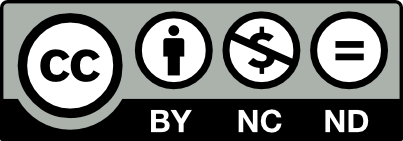The following story is the fourth in a series produced in collaboration with the Energy News Network, a St. Paul-based nonprofit news organization that covers clean energy policy.
Read our first three stories:
- Low-emissions steelmaking could be big business for Minnesota's Iron Range, experts say
- Taconite mines explore new technology to reduce energy, water use
- How giving trucks an electric boost can help cut mining pollution
IRON RANGE — A Hoyt Lakes native leading a regional hydrogen fuel partnership says the emerging fuel source could someday help make Minnesota’s Iron Range a leader in the production of green steel.
“Yes, certainly it has great potential,” said Tom Erickson, president and chief operating officer of the Heartland Hydrogen Hub, one of seven regional projects recently funded by the U.S. Department of Energy to kickstart hydrogen fuel production. “The first obvious use of hydrogen within the taconite (mining) industry is just to produce electricity.”

The federal government is investing billions to develop regional hydrogen production hubs, intended to spur the infrastructure needed to increase the supply and lower the cost enough to make it commercially viable.
Hydrogen emits only water vapor and warm air when burned, but it’s typically produced from natural gas in a process that creates high greenhouse gas emissions. The Heartland Hydrogen Hub will use renewable energy and nuclear power to try to reduce the climate impact, as well as the price tag.
The initial focus will be on supplying hydrogen for ammonia fertilizer, but Erickson said the same output could also replace more carbon-intensive fuels used to heat and power taconite mining operations on the Iron Range.
“That industry uses a lot of natural gas for heat and thermal systems, for producing the pellets,” Erickson said. “You’d have to design (the systems) quite a bit differently, but you could certainly add some hydrogen power to that and decrease the emissions from that standpoint.”
"It’s an exciting opportunity for Minnesota to embrace, and the conversation is just started."Rolf Weberg, University of Minnesota-Duluth
Manipulating molecules
The most abundant element in the universe, hydrogen has historically been difficult to harness into energy. The Hindenburg Disaster of 1937 is an infamous example that demonstrates hydrogen’s explosive qualities.
“You can't mine it. You can't stick a pipe in the ground, then bring hydrogen up. You have to produce it from something else. It's the smallest molecule, the hardest one to trap,” Erickson explained. “It's the hardest one to move around once you’ve produced it, so we have some things that we need to get over and get behind coming up with new innovative ideas to really bring the costs down.”
Most commercial hydrogen is produced today by separating the hydrogen atoms from methane under high heat and pressure, with many industrial facilities using natural gas as the methane source. This method produces hydrogen, carbon monoxide and a relatively small amount of carbon dioxide.
Electrolysis splits hydrogen from water using an electric current. This method does not create any byproducts or emissions other than oxygen and hydrogen. It is the primary focus of the Department of Energy’s investment into hydrogen energy.
The Heartland Hydrogen Hub’s projects are expected to reduce carbon emissions by roughly 1 million metric tons per year, the equivalent of 220,000 gasoline-powered cars.
Erickson — who is also the director of exploratory research at University of North Dakota — said infrastructure for hydrogen’s use on a wider scale is in the future.
"Shipping — whether it's trains or whether it's ships moving large quantities of oil around — they are even bigger targets,” he said. “Maybe even a little bit easier targets for application of the hydrogen fuel.”
Erickson, whose grandfather and numerous other relatives worked in the taconite mines on the Iron Range, said technology to produce higher quality taconite pellets has been studied in Keewatin, where U.S. Steel plans to invest $150 million in a new higher-grade taconite plant.
“Folks on the Range have looked at (higher grade taconite pellets) produced from natural gas, from coal derived gases and of course from hydrogen,” Erickson said.
The Heartland Hydrogen Hub is currently in the concept development phase, and Erickson said he is excited for the advancing technology in energy for the future.
“What I'm most excited about is to start to see larger scale production of hydrogen," he said. “Once we start producing it, we can start to find other ways to utilize the things that advantages society, different ways that we can manipulate the molecule …. to provide clean, reliable and sustainable energy.”
Feeling the heat
Steel is made using a lot of heat, and coal-powered blast furnaces are still used for 57% of global steelmaking capacity. That’s a decrease from the year before, when 67% of the world’s steel capacity was made using blast furnaces — marking a shift toward electric arc furnace technology worldwide.
The Iron Range supplies three-fourths of the country’s iron ore, from which steel is made. Steelmakers such as U.S. Steel and Cleveland-Cliffs, which own the mining operations on the Iron Range, are seeing growing pressure from governments, investors, and customers to reduce their climate emissions. It’s not just the potential for future environmental regulations. More companies are willing to pay a premium for steel that comes with a smaller carbon footprint.

Cutting emissions from mining and other heavy industry is expected to be a bigger challenge than cleaning up cars or power plants. That’s because of the need to power massive furnaces and other equipment for which electric alternatives aren’t widely available.
These factors are leading many manufacturers to be interested in the potential of hydrogen fuel. Cleveland-Cliffs, which owns and operates Hibbing Taconite, has already committed to funding a hydrogen power project at its Toledo plant. Without any modification to the plant, the company says it could replace up to 30% of natural gas consumption with hydrogen. And with equipment upgrades and other investments, this number could rise to 70%, accounting for 1 million metric tons of greenhouse gases each year.
Cleveland-Cliffs is also part of a federally funded hydrogen hub based in northern Indiana. In October, the company was recognized by the U.S. Department of Energy for cutting its greenhouse gas emissions by more than one-third.
The company didn’t respond to requests for comment on what its emission-cutting efforts might mean for northern Minnesota, but researcher Rolf Weberg said the state’s mining industry is well-positioned to make use of hydrogen fuel.

“It turns out that Minnesota is by far highly competitive for making green iron and steel, beyond other states in the country,” said Weberg, the executive director of University of Minnesota-Duluth's Natural Resource Research Institute. “We have essentially all of the resources, including infrastructure for future energy and access to water. All the things you need to have for a hydrogen-based approach to preparing green iron and steel.”
With the future of hydrogen energy, Weberg said conversations with stakeholders are only just beginning.
“Minnesota industry has been investing to prepare for this,” Weberg said. “It’s an exciting opportunity for Minnesota to embrace, and the conversation is just started. This is an opportunity to really lead the charge in this area, and also do it in tandem with green hydrogen and green steel.”
















